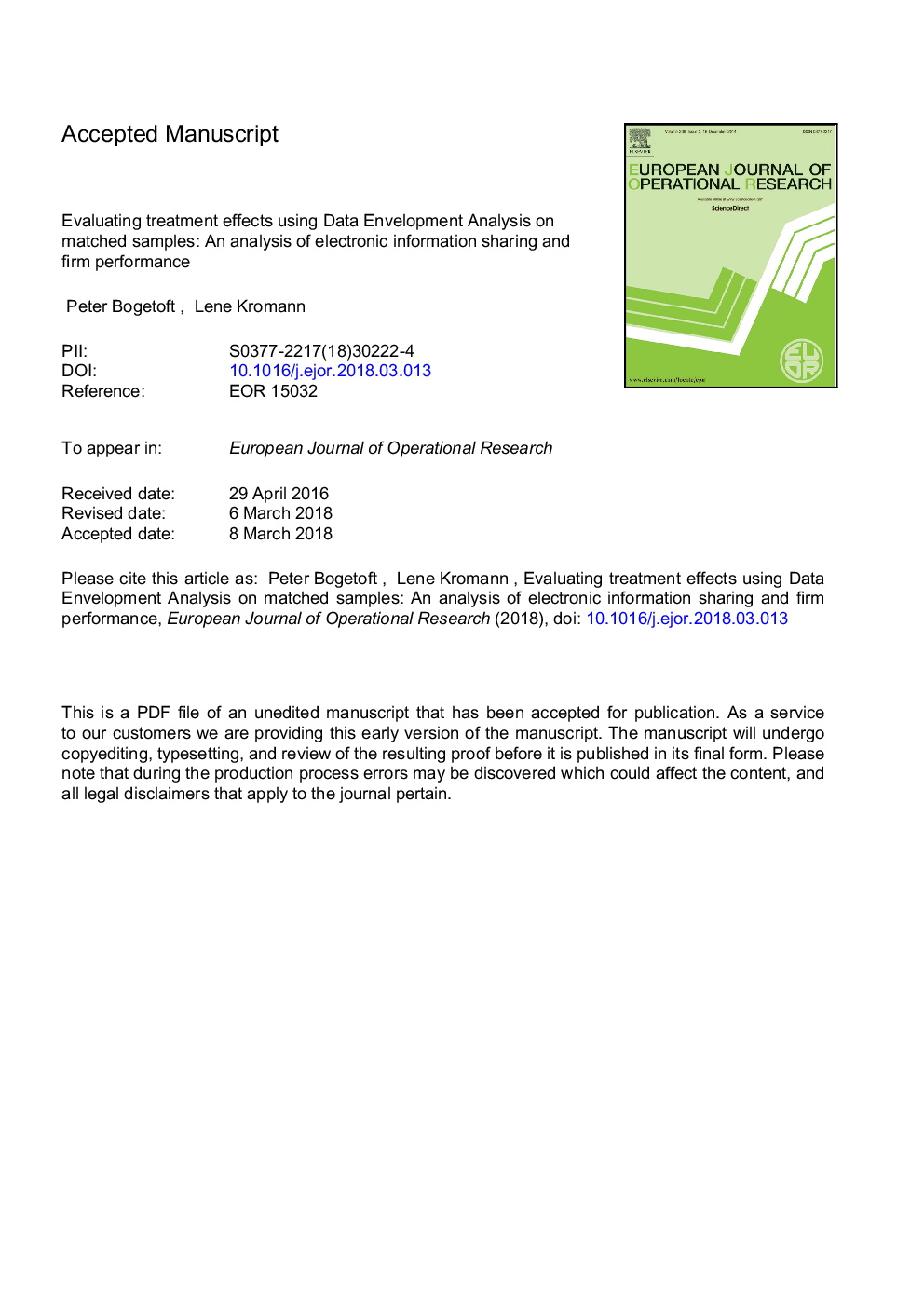| Article ID | Journal | Published Year | Pages | File Type |
|---|---|---|---|---|
| 6894646 | European Journal of Operational Research | 2018 | 34 Pages |
Abstract
An intuitively obvious approach to evaluating the effects of a new business model is to compare the performance of firms using the business model (the treatment group) with the performance of a similar group of firms that do not use the business model (the control group). Data Envelopment Analysis (DEA) can be a powerful tool in such comparisons because it allows us to estimate changes in average performance as well as in frontier performance. In this paper, we suggest using matching together with DEA as a way to ensure subâsample homogeneity. The advantages of using a matched sample compared to a random sample of non-treated firms to remove sample size bias is documented using a simulation study. A real-world application is also provided. In the application, we study how information sharing has impacted the performance of Danish manufacturing firms. We match firms that use electronic information sharing to their “twin” firms that do not on the basis of firm characteristics. Before matching, there is a considerable difference in performance between the two groups. However, after matching, we can conclude that approximately 50% of the difference is the result of selection bias.
Related Topics
Physical Sciences and Engineering
Computer Science
Computer Science (General)
Authors
Peter Bogetoft, Lene Kromann,
